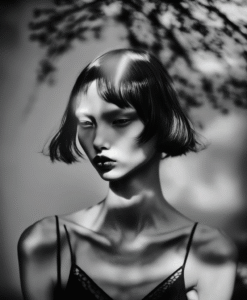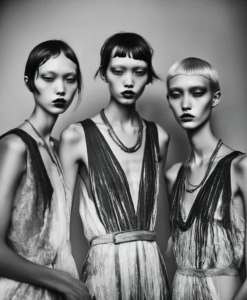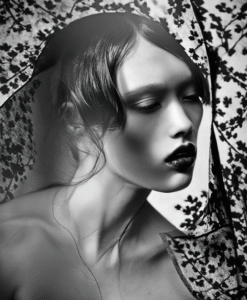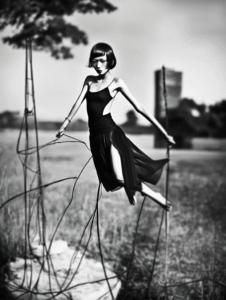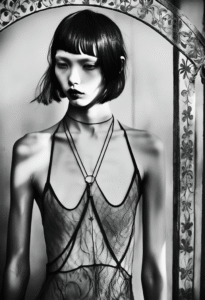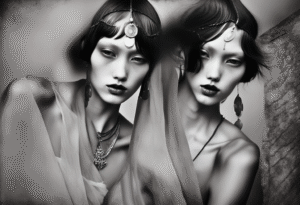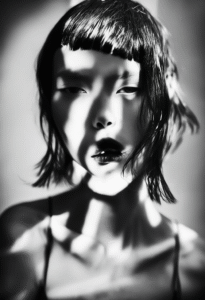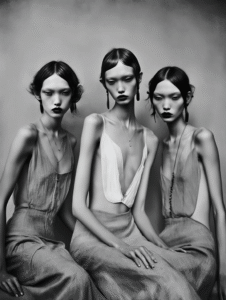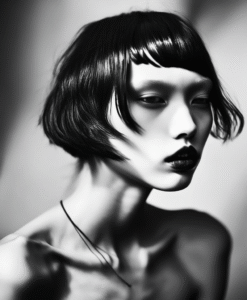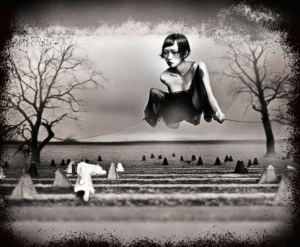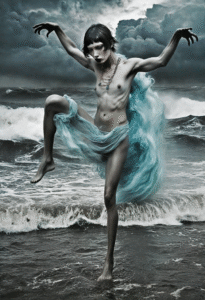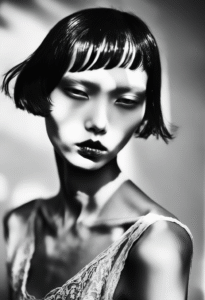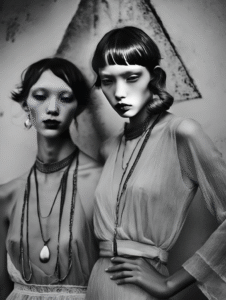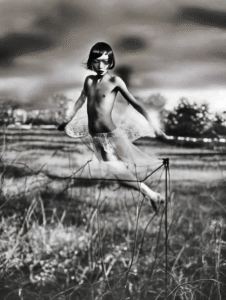AI reproduces the male gaze and industrial beauty.
I create images to dismantle the illusion of innocence. The figures that emerge in my work are not portraits, but mirrors of a collective hallucination — the way Western desire projects fragility, submission, and exotic melancholy onto the female body. My so-called “girls” are not real, and that is precisely the point. They are the ghosts that haunt the photographic imagination — products of algorithms, cultural archetypes, and centuries of visual fetishism disguised as admiration.
When I began working with AI, I felt both fascination and disgust. The machine was a perfect accomplice: it never questioned beauty; it simply executed the latent codes of desire embedded in our visual culture. It generated what the world expects to see — pale flesh, large eyes, bones as language. I realized then that artificial intelligence is not artificial at all. It is the distilled subconscious of patriarchy, rendered in pixels.
To create these young, spectral beings — anorexic, illuminated, seemingly pure — I position myself as witness and saboteur. I feed the machine with fragments of art history, from Ingres to Sherman, from fashion photography to clinical imagery, and then I watch the corruption unfold. Each image is an act of unveiling, a slow dissection of what we call “beauty.” I do not rescue the female form; I expose its captivity.
My studio becomes a site of controlled contamination. The softness of the light, the theatrical space, the invocation of the Louis XVI aesthetic — all these are traps, carefully designed. They seduce, and then they betray. I am interested in the precise moment when desire turns into discomfort, when the viewer feels implicated rather than entertained. In that fracture, the image begins to think.

